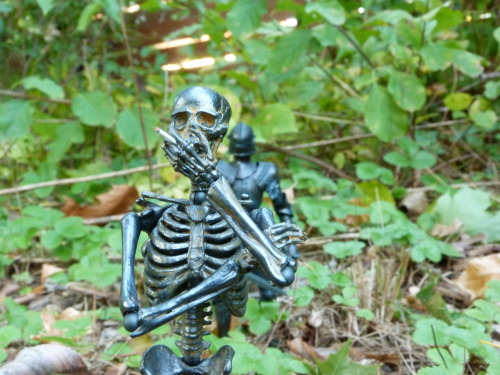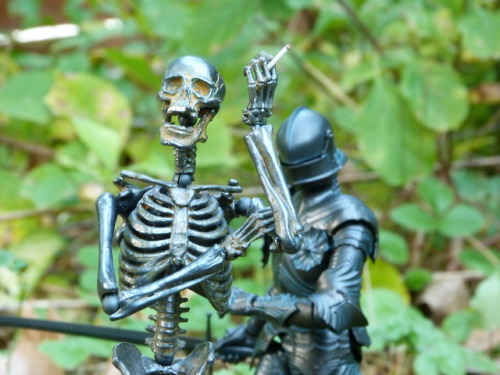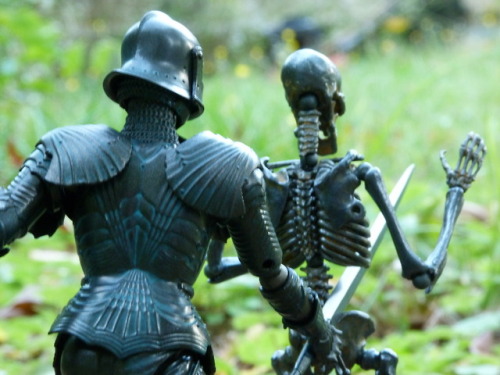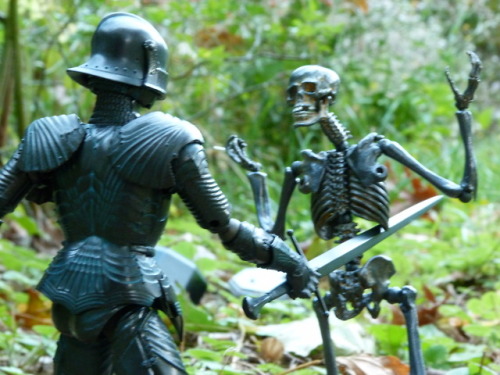
Hi, I'm GingerJay! Feel free to call me whatever you'd likeI'm just a man who really loves his animals#1 fan of the adirondacksfeel free to say Hi or ask any questions if you'd likehe/himI AM NOT A MINOR NOR DOES MY BLOG HAVE MINORS IN MIND YE BE WARNEDTrigger warning for any potential mature subjects, including violence, sex, death, etc. I'm a very science minded person and therefore discuss things in a scientifc manner sometimes
718 posts
The Mahi-mahi Or Common Dolphinfish (Coryphaena Hippurus) Is A Surface-dwelling Ray-finned Fish Found

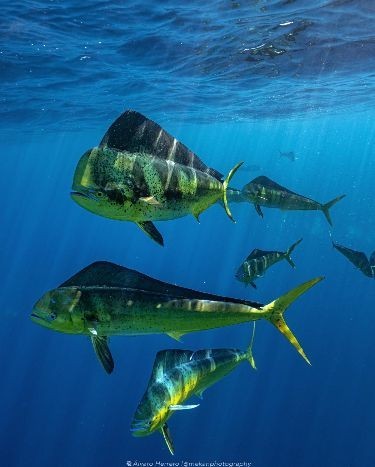




The mahi-mahi or common dolphinfish (Coryphaena hippurus) is a surface-dwelling ray-finned fish found in off-shore temperate, tropical, and subtropical waters worldwide. It is also widely called dorado (not to be confused with Salminus brasiliensis, a freshwater fish) and dolphin (not to be confused with the aquatic mammal dolphin). It is one of two members of the family Coryphaenidae, the other being the pompano dolphinfish. These fish are most commonly found in the waters around the Gulf of Mexico, Costa Rica, Hawaii and the Indian Ocean.
The name mahi-mahi comes from the Hawaiian language and means 'very strong', through the process of reduplication. By chance in Persian, mahi (ماهی) means 'fish', but the word mahi-mahi is Hawaiian. Though the species is also referred to as the common dolphinfish, the use of dolphin can be misleading as they are not closely related to dolphins; see Coryphaena for the possible etymologies of dolphinfish. In parts of the Pacific and along the English-speaking coast of South Africa, the mahi-mahi is commonly referred to by its name in Spanish, dorado. On the Mediterranean island of Malta, the mahi-mahi is referred to as the lampuka. In Indonesian, they are called ikan lemadang.
Linnaeus named the genus, derived from the Greek word, κορυφή, koryphe, meaning 'top' or 'apex', in 1758. Synonyms for the species include Coryphaena argyrurus, Coryphaena chrysurus, and Coryphaena dolfyn.
Mahi-mahi have compressed bodies and one very long dorsal fin extending from the head almost to the tail fin. Mature males have distinctive "foreheads"; it grows as the fish matures and often protrudes well above the body proper, which is streamlined by the musculature of the back. This "hump" is a sexually dimorphic feature; females have a rounded head. Their caudal fins and anal fins are sharply concave. They are distinguished by dazzling colors – golden on the sides, and bright blues and greens on the sides and back. The pectoral fins of the mahi-mahi are iridescent blue. The flank is broad and golden. Out of the water, the fish often change color (giving rise to their Spanish name, dorado, 'golden'), going through several hues before finally fading to a muted yellow-grey upon death.
Mahi-mahi can live for up to five years, although they seldom exceed four. Females are usually smaller than males. Catches typically are 7 to 13 kg (15 to 29 lb) and a meter in length. They rarely exceed 15 kg (33 lb), and mahi-mahi over 18 kg (40 lb) are exceptional. Mahi-mahi are among the fastest-growing of fish. They spawn in warm ocean currents throughout much of the year, and their young are commonly found in rafts of Sargassum weeds. Young mahi-mahi migrate past Malta where they are called lampuki and Sicily where they are known as lampuga or capone; there they are fished using nets and floating mats of palm leaves under which they collect.
Mahi-mahi are carnivorous, feeding on flying fish, crabs, squid, mackerel, and other forage fish. They have also been known to eat zooplankton. To pursue such varied pelagic prey, mahi-mahi are fast swimmers, swimming as fast as 50 knots (92.6 km/h, 57.5 mph).[citation needed]
Males and females are sexually mature in their first year, usually by the age of 4–5 months. Spawning can occur at body lengths of 20 cm (7.9 in). Females may spawn two to three times per year, and produce between 80,000 and 1,000,000 eggs per event. In waters at 28 °C/83 °F, mahi-mahi larvae are found year-round, with greater numbers detected in spring and fall. Mahi-mahi fish are mostly found in the surface water. Their flesh is grey-white when raw, cooking to an attractive white with a clean, non-fishy flavour.
-
 daemonhuntress liked this · 1 year ago
daemonhuntress liked this · 1 year ago -
 minkebel reblogged this · 1 year ago
minkebel reblogged this · 1 year ago -
 minkebel liked this · 1 year ago
minkebel liked this · 1 year ago -
 peachyfuck18 liked this · 1 year ago
peachyfuck18 liked this · 1 year ago -
 subject--13919 liked this · 1 year ago
subject--13919 liked this · 1 year ago -
 heartvagabond liked this · 1 year ago
heartvagabond liked this · 1 year ago -
 yellowamericanspirits liked this · 1 year ago
yellowamericanspirits liked this · 1 year ago -
 yourehomenow reblogged this · 1 year ago
yourehomenow reblogged this · 1 year ago -
 smfl reblogged this · 1 year ago
smfl reblogged this · 1 year ago -
 smfl liked this · 1 year ago
smfl liked this · 1 year ago -
 thorned-urchin reblogged this · 1 year ago
thorned-urchin reblogged this · 1 year ago -
 the-consulting-geek liked this · 1 year ago
the-consulting-geek liked this · 1 year ago -
 swedishforestroamer liked this · 1 year ago
swedishforestroamer liked this · 1 year ago -
 4illinois liked this · 1 year ago
4illinois liked this · 1 year ago -
 alienstimboards liked this · 1 year ago
alienstimboards liked this · 1 year ago -
 futuristicfuntraveler liked this · 1 year ago
futuristicfuntraveler liked this · 1 year ago -
 sunnyworldsposts liked this · 1 year ago
sunnyworldsposts liked this · 1 year ago -
 xanderomeister reblogged this · 1 year ago
xanderomeister reblogged this · 1 year ago -
 xanderomeister liked this · 1 year ago
xanderomeister liked this · 1 year ago -
 gingerjaydraws reblogged this · 1 year ago
gingerjaydraws reblogged this · 1 year ago -
 gingerjaydraws liked this · 1 year ago
gingerjaydraws liked this · 1 year ago -
 angel-lopes2000 liked this · 1 year ago
angel-lopes2000 liked this · 1 year ago -
 whyamistillawake liked this · 1 year ago
whyamistillawake liked this · 1 year ago -
 long-lost-soul liked this · 1 year ago
long-lost-soul liked this · 1 year ago -
 xunicolor reblogged this · 1 year ago
xunicolor reblogged this · 1 year ago -
 the-lonelyshepherd reblogged this · 1 year ago
the-lonelyshepherd reblogged this · 1 year ago -
 the-lonelyshepherd liked this · 1 year ago
the-lonelyshepherd liked this · 1 year ago -
 runawaybay liked this · 1 year ago
runawaybay liked this · 1 year ago -
 thorned-urchin liked this · 1 year ago
thorned-urchin liked this · 1 year ago -
 beatriz2009silva liked this · 1 year ago
beatriz2009silva liked this · 1 year ago -
 deathmoth-blog liked this · 1 year ago
deathmoth-blog liked this · 1 year ago
More Posts from Gingerjaydraws
i think of this ProZD video constantly its always so fucking funny
Oh yeah, you've got to give this a watch! It's an amazing and fascinating film!
NEW VIDEO! (A very especial one)
Antediluvian is a short animated film that got me occupied for almost two years. It's a commemorative homage to Classic Paleoart and the earliest Paleontologists. Exactly 200 years ago was the first dinosaur formally described . I hope you enjoy it! In general Youtube tends to dismiss videos that are different tha the usual, so your support is highly appreciated :) Thank you all!
__
Youtube channel
Prints and more paleomerch

I haven't seen this circulating here on Tumblr, so I decided to make my own post.
last saturday, in Porto, there was a pride parade going down the street and this old man was standing there, by his front door, waving the portuguese flag. most people on the parade probably thought the same: old person waving the national flag? he's probably protesting against the parade, he's a nationalist of some sort.
then the old man called for that person to come near him. the whole parade stopped. everyone just.. stopped moving. they didn't know what to expect, and most expected the worst. and that person decided to give him the benefit of the doubt and approached the old man. and then... they traded flags, he hugged the person and then he waved the pride flag happily. everyone cheered him.
such a wholesome moment. 🥹❤️🌈

(edited to add the link to the video, in case the twitter post gets deleted or smth)
